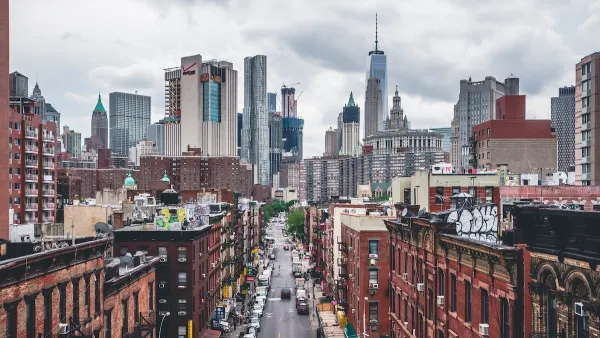Are children, millenials and baby boomers returning to cities? The best answer: sometimes, sometimes, and maybe not.
Recently, there’s been a lot of Internet chatter about who likes cities and who likes suburbs: posts and articles about children abandoning cities, children not abandoning cities, millenials returning to urban centers and baby boomers doing the same. Which of these stories is supported by data?
First of all, I note that no trend applies everywhere. Places that are growing rapidly are growing in all age groups, while declining cities like Cleveland are declining in a wide variety of age groups.
So I’m going to focus not on the extremes of growth and decline, but on a few large, walkable cities that have shown modest growth and decline:Manhattan and the five cities outside New York with the highest transit ridership (Boston, San Francisco, Chicago, Philadelphia and Washington).*
The trend among children is complex. On the one hand, the number of children over 5 declined in most cities between the 2000 and 2010 Censuses. On the other hand, in most places the number of children age 0-5 increased in each of the cities studied except population-losing Chicago. Is this the beginning of a long-term trend? Or are parents just waiting a few extra years to move to the suburbs? I can’t say.
Millenials may indeed be moving back to cities- but not to all cities. In four of my six cities, the population of millenials (persons aged 20-34) increased between 2000 and 2010: most notably in Washington (where this group increased by 23%) but also in Manhattan, Philadelphia, and Boston. (In the latter two cities, the population increased by over 10%, more rapidly than the national population of this age group). As you might expect from Chicago’s overall population decline, the millennial population decreased (although no more rapidly than the overall population). Most puzzling was San Francisco, where the millennial population decreased very slightly (by about 3 percent) while the overall population went up, as did the population of young millenials (persons aged 20-24).**
By contrast, 55-64 year olds (baby boomers old enough to be “empty nesters”) increased everywhere, by margins ranging from 21% in Chicago to 46% in San Francisco). Does this mean baby boomers are returning to cities? Not quite. Nationally, the number of 55-64 year olds increased by about 50 percent between 2000 and 2010, so these cities’ growing baby-boomer population reflects the aging of an extremely large age group rather than migration.
So what does it all mean? My only takeaway is that the “millenials like cities” story is probably more true in more places than the “baby boomers like cities” story.
*For a summary of my data, go to my personal blog; for raw data go to the Census web page.
*However,San Francisco gained population through a slight increase in 45-54 year olds and 65+ year olds- groups that declined in some other cities.

Analysis: Cybertruck Fatality Rate Far Exceeds That of Ford Pinto
The Tesla Cybertruck was recalled seven times last year.

National Parks Layoffs Will Cause Communities to Lose Billions
Thousands of essential park workers were laid off this week, just before the busy spring break season.

Retro-silient?: America’s First “Eco-burb,” The Woodlands Turns 50
A master-planned community north of Houston offers lessons on green infrastructure and resilient design, but falls short of its founder’s lofty affordability and walkability goals.

Test News Post 1
This is a summary

Analysis: Cybertruck Fatality Rate Far Exceeds That of Ford Pinto
The Tesla Cybertruck was recalled seven times last year.

Test News Headline 46
Test for the image on the front page.
Urban Design for Planners 1: Software Tools
This six-course series explores essential urban design concepts using open source software and equips planners with the tools they need to participate fully in the urban design process.
Planning for Universal Design
Learn the tools for implementing Universal Design in planning regulations.
EMC Planning Group, Inc.
Planetizen
Planetizen
Mpact (formerly Rail~Volution)
Great Falls Development Authority, Inc.
HUDs Office of Policy Development and Research
NYU Wagner Graduate School of Public Service




























